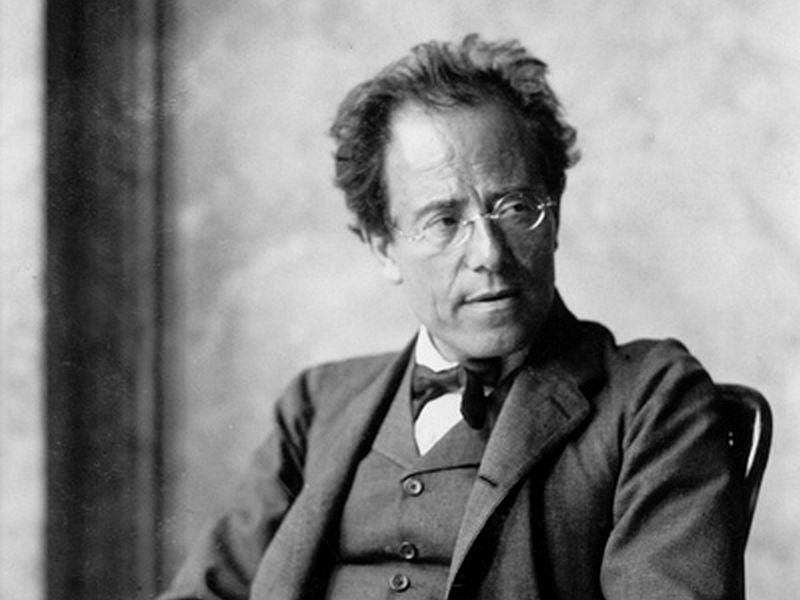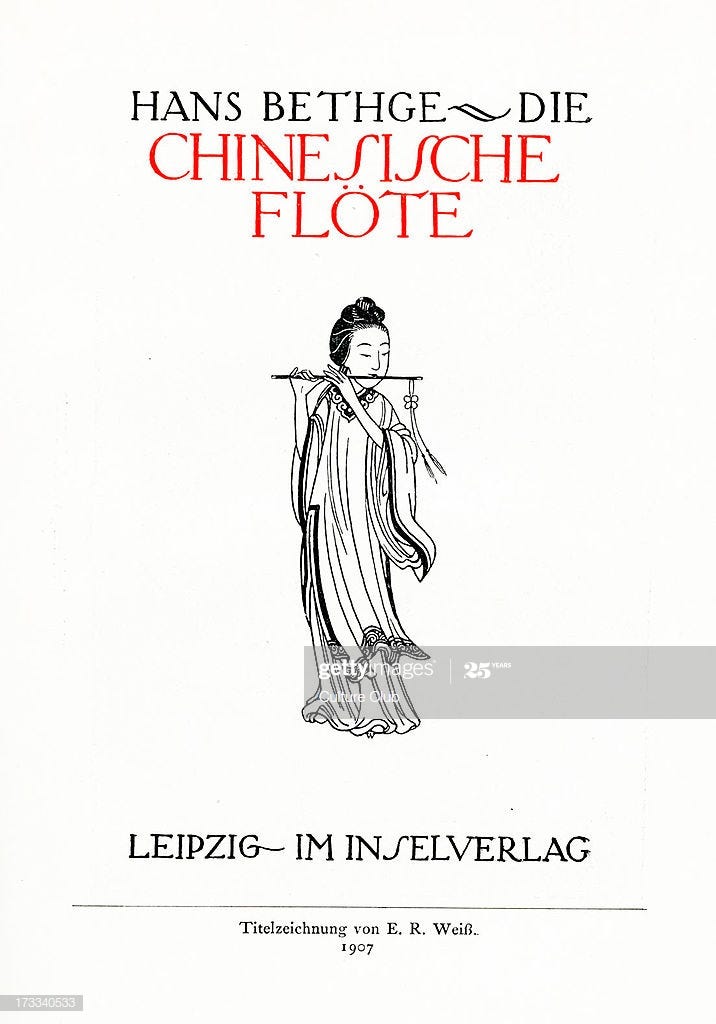

While the summer of 1906 saw his Symphony №8 burst forth in just six weeks of inspired composing, it is easy to understand why Mahler was unable to write any music at all during the summer of 1907. In June of that year, his eldest daughter, Maria Anna, died at age five from scarlet fever and diphtheria at the family villa in Maiernigg; he was diagnosed with a congenital heart defect; and he was forced to resign from his post of General Music Director of the Vienna Court Opera. The only thing that he was able to do that summer was immerse himself in Hans Bethge’s newly published German verse translations of Chinese poetry, Die chinesische Flöte (The Chinese Flute).
In the Fall of 1907, Mahler left for New York City, where he had accepted to conduct for four months at the Metropolitan Opera. It was just what he needed to regain a financial and artistic foothold. When he returned to Europe in June 1908, he and his family decided to spend their summer holidays at the Hotel Trenkerhof in Toblach, a small village in the Dolomites. Unfortunately, Mahler was not allowed to do any of the physical activities — hiking, cycling, swimming — that he needed in order to decompress and begin composing again. He writes to Bruno Walter in frustration,

This time I must change not only my home, but also my whole way of life. You can’t imagine how hard it is for me. For years I’ve been used to constant and vigorous exercise, roaming about through forests and mountains, and then bringing home my drafts like prizes plundered from nature. I would go to my desk only as a peasant goes into his barn, just to give shape to my sketches. Even spiritual indisposition used to vanish after a good trudge (especially uphill). Now I am supposed to avoid any exertion, to watch over myself constantly, not to walk much. And in this solitude here, which leaves me to concentrate on myself, I am all the more aware of what is physically wrong with me. Perhaps my outlook has become too gloomy, but since I’ve been living in the country I’ve felt less well than in the city, where many distractions took my mind off things.
Now completely aware of his own mortality, and superstitious of the fact that no composer since Beethoven had completed more than nine symphonies, Mahler began working on a symphonic song cycle during this restricted summer. The piece remained named, Die Flöte aus Jade (The Flute of Jade), for over a year. After he completed his Symphony №9, he then renamed it to Das Lied von der Erde (The Song of the Earth) and gave each movement their names.
- Das Trinklied vom Jammer der Erde (The Drinking Song of Earth’s Sorrow)
- Der Einsame im Herbst (The Lonely One in Autumn)
- Von der Jugend (Of Youth)
- Von der Schönheit (Of Beauty)
- Der Trunkene im Frühling (The Drunkard in Spring)
- Der Abschied (The Farewell)
At the bottom of the page he wrote, Ninth Symphony in Six Movements, somehow convincing himself that he had cheated the Curse of the Ninth. Translations of the complete text can be found here.
Mahler passed away May 18, 1911, and Das Lied von der Erde as well as Symphony №9 were premiered by his disciple and assistant conductor at the Vienna Court Opera, Bruno Walter. The premiere of Das Lied took place in Munich on November 11, 1911, just six month after Mahler’s death.
Here’s a fascinating 40-minute introduction of Das Lied von der Erde by Leonard Bernstein that also includes great rehearsal footage.
Here are my favorite performances:
